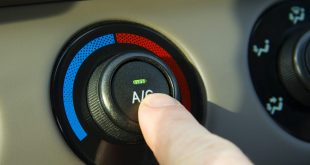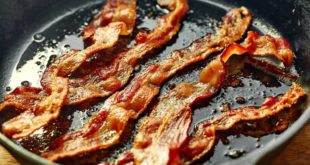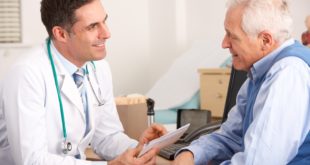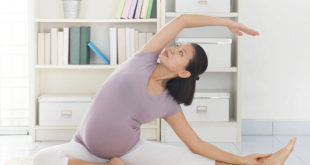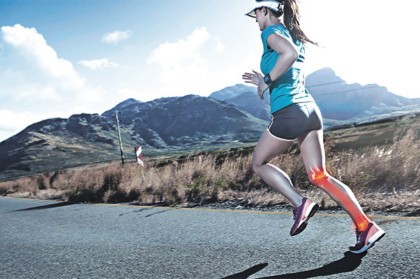
What is osteopenia?
Osteopenia is a condition in which your bone mineral density is lower than normal, resulting in a weaker skeletal system. It’s one step shy ofosteoporosis, which can cause debilitating bone fractures, particularly later in life, and experts say it should be treated as an early warning sign.
However, because it’s often difficult to detect, you may not even know you have a problem until you fracture a bone, and by then osteoporosis has already likely struck. This means it’s important to know your risk and start protecting your bones early.
Who’s at risk?
About 1.2 million people have osteoporosis and a further 6.3 million have osteopenia – this means 34 per cent of Aussies have low bone density. While about three-quarters of this number are women as they naturally have a lower peak bone density, it’s still a common and often untreated issue for men.
Many factors impact our bone health, but certain people are more at risk. Bones naturally weaken with age, and this speeds up aroundmenopause, when bone mass is reduced by the big drop in oestrogen. Low testosterone can also increase the risk in older men. However, osteopenia can also occur in young people, particularly women, who have a very low body mass index (BMI).
“Low body weight isn’t a good thing for your bones, because the more load you put on your bones and muscles, the higher your bone density,” professor Markus Seibel, a member of Osteoporosis president of the Australia and New Zealand Bone and Mineral Society, says.
Poor bone health can also run in families, with about 40-60 per cent of bone density genetically determined, Seibel says. Other risk factors include medication, a sedentary lifestyle and lack of exercise, smoking, poor diet, low vitamin D and calcium levels, and coeliac disease (an allergy to gluten).
How to prevent it
Osteopenia is difficult to detect with a simple blood test because your blood’s calcium levels aren’t an indicator of bone density.
The key is early screening via a bone mineral density scan or dual-energy X-ray absorptiometry. Those over 50 and with risk factors (see box, below) will be screened every two years, or from a younger age if your doctor believes it’s required.
The scan measures bone density, usually in the hips and spine. It’s a simple, safe and inexpensive test that takes about 10 minutes and is an accurate predictor of fracture risk.
It provides you with a “T Score”: higher than -1 means you’re in the normal range; -1 to -2.5 means you have osteopenia; -2.5 or lower indicates you have osteoporosis.
To slow bone loss, your doctor may suggest some simple lifestyle changes and/or medication if necessary. By adding some body weight, people with a very low BMI can turn things around quite quickly, but in most cases it can take years to show improvement and levels may never return to normal. That’s why it’s good to maintain strong bones from the start. Here’s how:
Get bone-friendly nutrients
Osteoporosis Australia recommends thinking of your bones as a calcium bank. If you’re not consuming enough calcium − and less than half of all adults do − your body will withdraw it from your bones, causing bone density to diminish.
Our calcium needs peak in our teenage years, when most bone mass is built, and drop off after 50 for women (thanks to menopause) and 70 for men. Adults need 1000mg-1300mg or three to five serves of calcium-rich food daily (such as salmon, almonds, vegetables, calcium-fortified dairy, and soy beans). Check with your GP about topping up withsupplements, if required.
Vitamin D helps with absorption of calcium and maintains muscle strength, yet almost one-third of us don’t get enough. You can have your levels checked with a blood test and top up daily with safe sun exposure and, if necessary, supplements. There’s a tiny amount in foods such as oily fish, eggs and fortified margarine and a moderate amount in sun-exposed mushrooms.
Do the right kind of exercise
Physically active older people have up to 45 per cent lower risk of hip fractures than their sedentary counterparts but not just any exercise will do. Thanks to NASA, we know gravity is an essential part of the equation. After living in space, astronauts often suffer considerable bone mass loss due to a lack of stress or impact.
Seibel says walking doesn’t do much, nor does cycling and swimming. The key is for both feet to touch the ground with force (think jogging, stair climbing, skipping, dancing and basketball). Try combining resistance training with moderate impact weight-bearing activities by using hand weights or a weight vest, but consult an exercise physiologist or physiotherapist first. The aim is to boost your bone density as well as muscle strength, balance, coordination and posture.
For more information and resources, visit the Healthy Bone Action Week website at healthybones.com.au
“I have osteopenia despite being fit and in my 40s” – Christina Larmer, 47
As a health writer, I know all about osteoporosis and have long assumed it was an older person’s problem, not an issue for someone in their 40s.
At 47, I’m slim, exercise daily, love my dairy and have a BMI to be proud of, but my GP wasn’t quite so confident when she suggested I get a bone density check.
She treats dozens of women with osteopenia and says that most of them look just like me. They’re avid cyclists, swimmers or are naturally petite, and are simply not carrying enough weight. That, coupled with the fact that my dad suffers from osteoporosis, made me the ideal candidate.
My GP was right. I had mild osteopenia in one hip and, with calcium-leaching menopause looming, I needed to act fast. However, I’m told that if I wasn’t so healthy, it could’ve been much worse.
My GP prescribed calcium supplements and hooked me up with a local sports physiologist, who ran me through simple weight-bearing exercises I can do from home, such as squats and push-ups, which take about 10 minutes and also involve small hand weights.
She also suggested I put a few kilos on my hips but I opted to start wearing a 5kg weight vest instead. I slip it on before I walk to the school bus each morning, much to my son’s embarrassment as it looks like a bulletproof vest. However, it provides the same kind of protection and I’m happy to tolerate strange stares because it makes me feel like I’m fracture-proofing my bones for life.
A year later, I’m feeling stronger around my core, the vest gives my workouts a boost and I’m expecting good results from a bone density scan later this year. Meantime, I now look enviously at my amply-hipped girlfriends.

Writer Christina Larmer is affected by osteopenia
Risk factors for osteopenia
- Family history of osteoporosis
- Low body weight/BMI or anorexia
- Low levels of calcium and vitamin D
- A diet high in sodium, caffeine and alcohol, and low in fruit and vegetables
- Sedentary job or impaired mobility (for example, people in wheelchairs)
- Smoking
- Hypogonadism (delayed puberty in males)
- Insufficient exposure to safe levels of sunlight
- Lactose intolerance or coeliac disease
Source: bodyandSoul
 We are sharing information for knowledge. Presented by. SocialDiary.Net
We are sharing information for knowledge. Presented by. SocialDiary.Net
